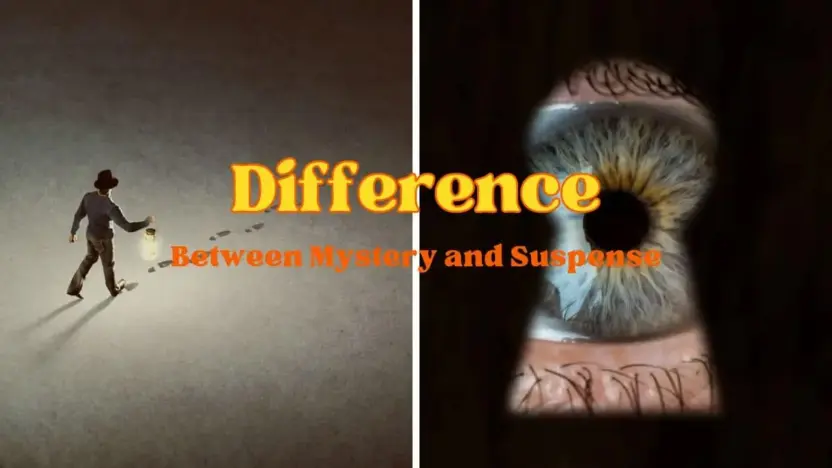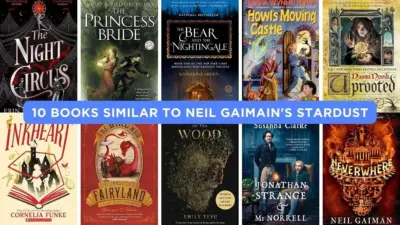In the world of storytelling, mystery and suspense captivate audiences and keep them on the edges of their seats. While both genres are staples in literature and film, creating nail-biting anticipation and complex narratives, they cater to different aspects of human curiosity and fear. Understanding the nuances between mystery and suspense is not just an academic exercise; it’s crucial for any reader or writer aiming to delve deeper into the mechanics of storytelling. This blog post explores these two popular genres, defining them, discussing their key characteristics, and distinguishing the unique ways they engage and affect their audiences. Whether you’re a voracious reader, a film buff, or an aspiring writer, recognizing the differences between mystery and suspense can enhance your appreciation of stories and may even influence your next thrilling creation.
Definition of Key Terms
Mystery: At its core, a mystery is a genre of fiction that involves the solving of a crime or the unraveling of secrets. It revolves around a central enigmatic challenge or question that compels the audience to piece together clues alongside the protagonist, typically a detective or an amateur sleuth. The narrative is structured around this quest for answers, leading to a resolution where the mystery is solved, often revealing unexpected truths. Mysteries engage the reader’s intellect and deductive reasoning, making them active participants in the narrative.

Suspense: Suspense, on the other hand, is a genre designed to evoke emotions of excitement, anxiety, and tension in the audience. It is characterized by the anticipation of what will happen next, often placing characters in precarious or dangerous situations that build towards a climax. Unlike mysteries, which focus on the ‘who’ or ‘how,’ suspense is often concerned with the ‘will’ or ‘won’t’—will the hero save the day? Won’t the villain succeed? The uncertainty and the stakes involved keep the audience hooked, creating a palpable sense of urgency and concern for the characters’ outcomes.
Core Characteristics of Mystery
Mystery, as a genre, captivates its audience by drawing them into a puzzle that needs to be solved, wrapped around intrigue, hidden clues, and unexpected revelations. Here are some of the key characteristics that define a typical mystery:
- The Central Puzzle or Problem: Every mystery story revolves around a key question, typically involving a crime such as a murder or theft. The narrative is built around discovering who committed the crime and why.
- The Detective Figure: Whether a professional detective, a gifted amateur, or even a curious group of kids, mysteries often feature a protagonist with a knack for observation and deduction. This character leads the audience through the investigation, uncovering clues and interrogating suspects.
- Clues and Red Herrings: Essential to the plot are the clues that help solve the mystery, interspersed with red herrings designed to mislead and add complexity to the storyline. The balance between misleading and genuine clues challenges the reader’s deductive abilities.
- Suspense Through Uncertainty: While suspense is a trait more commonly associated with its own genre, it also plays a crucial role in mysteries. The uncertainty about the identity of the culprit or the motive behind the crime keeps readers engaged and turning pages.
- The Final Reveal: A hallmark of the mystery genre is the dramatic unveiling of the mystery’s solution, typically in a climactic scene where the detective explains the intricacies of the case and reveals the perpetrator, often surprising the audience.
- Logical Resolution: The conclusion of a mystery is not just about revealing the culprit, but also about providing a logical and satisfying resolution to all the questions raised throughout the story, reaffirming the reader’s investment in the narrative.
Core Characteristics of Suspense
Suspense is a genre that thrives on the emotional and psychological engagement of its audience, creating a continuous feeling of anticipation and concern about the outcomes of certain events. Below are some of the defining characteristics of suspense:
- Heightened Emotional States: Suspense stories are designed to provoke strong emotional responses such as fear, hope, anxiety, and anticipation. This emotional rollercoaster is sustained by placing characters in perilous or high-stakes situations.
- Prolonged Tension: Unlike mysteries, where resolution is reached by solving a puzzle, suspense maintains tension by delaying the resolution of a critical situation. This tension is managed carefully to keep readers or viewers on edge without resolving the primary conflict until the climax.
- Imminent Danger: Characters in suspense stories are often in imminent danger, and the threat of harm (either physical or emotional) looms large. This constant threat is crucial for keeping the audience engaged, as they become concerned for the characters’ safety and well-being.
- Uncertainty and Unpredictability: The outcomes of the story are not just unknown but are presented in a way that makes predicting them difficult. Twists and turns are common, and just when the solution seems clear, new complications arise, keeping the audience guessing.
- Perspective and Point of View: Suspense often utilizes the perspectives of multiple characters to enhance the emotional depth and complexity of the narrative. This can include shifting between the protagonist and antagonist, providing varying levels of insight and misdirection.
- Climactic Conclusions: The climax of a suspense story typically involves a confrontation or significant revelation that resolves the primary narrative tension. The resolution is both cathartic and emotionally satisfying, rewarding the audience for their emotional investment.

Difference Between Mystery and Suspense a tabular form
| Aspect | Mystery | Suspense |
|---|---|---|
| Primary Focus | Solving a puzzle or crime. | Emotional and psychological tension. |
| Narrative Structure | Revolves around clues and deductive reasoning. | Built on imminent danger and prolonged tension. |
| Engagement Style | Intellectual engagement through clues and deductions. | Emotional engagement through fear, anxiety, and anticipation. |
| Key Elements | Detective figure, clues, red herrings, logical resolution. | Heightened emotional states, uncertainty, unpredictability. |
| Character Role | Detective or sleuth who uncovers the truth. | Characters often in danger, with multiple perspectives shown. |
| Outcome | Culminates in the reveal of who and why. | Climax resolves through confrontation or escape from danger. |
| Audience Expectation | Expectation to solve the mystery alongside the protagonist. | Concern for characters’ well-being and curiosity about outcomes. |
Comparison Between Mystery and Suspense
While mystery and suspense genres share some overlapping elements, particularly in their ability to engage and captivate audiences, their core methods of storytelling and audience engagement differ significantly. Here’s a deeper look at how these genres compare:

- Purpose and Focus:
- Mystery: The primary focus is on solving a puzzle, usually a crime. The narrative is driven by the collection of clues, interrogation, and deduction. The mystery genre’s primary question is “Who did it and why?”
- Suspense: Focuses more on the emotional response of the audience to danger and threat. Suspense is less about answering a specific question and more about creating a situation where the outcome is desperately awaited but uncertain. The main question is “What will happen next?”
- Audience Engagement:
- Mystery: Engages the audience’s intellect and analytical skills. Readers are often invited to solve the mystery alongside the protagonist, which provides a cerebral form of entertainment.
- Suspense: Engages the audience’s emotions directly, keeping them on the edge of their seat due to the constant threat looming over characters. It’s more about feeling the story than analyzing it.
- Character Development:
- Mystery: Often features a detective or an amateur sleuth with a keen eye for detail and a logical mind. The development of other characters tends to revolve around how they contribute to the puzzle.
- Suspense: Characters are developed in a way that maximizes emotional investment from the audience, with more focus on their relationships, fears, and desires. The protagonist’s emotional resilience and resourcefulness are often tested.
- Plot Development:
- Mystery: The plot is intricately woven around secrets that are gradually revealed through careful investigation. Each revelation is a piece of the puzzle fitting into place, leading to a rational and often surprising conclusion.
- Suspense: The plot builds around a looming crisis or a series of crises, with tension escalating through complications and setbacks. The resolution often involves a climax where the immediate danger is confronted or escaped.
- Reader/Viewer Satisfaction:
- Mystery: Satisfaction comes from the resolution of curiosity, the logical fitting together of clues, and the intellectual triumph of solving the puzzle.
- Suspense: Satisfaction is derived from emotional relief and resolution of tension, often following a cathartic climax where fears are confronted and overcome.
Also Read: Difference Between Folktale and Fable



